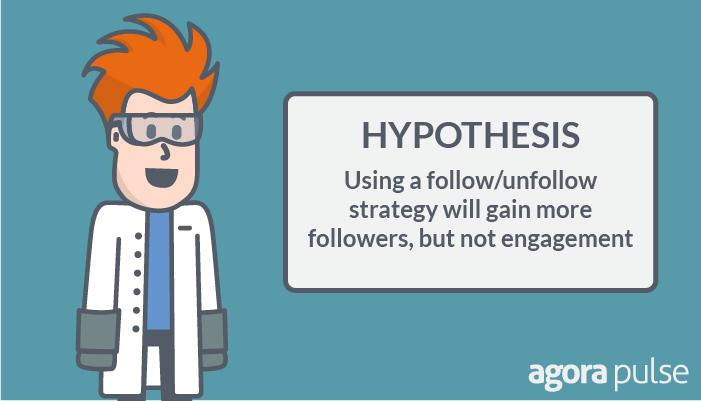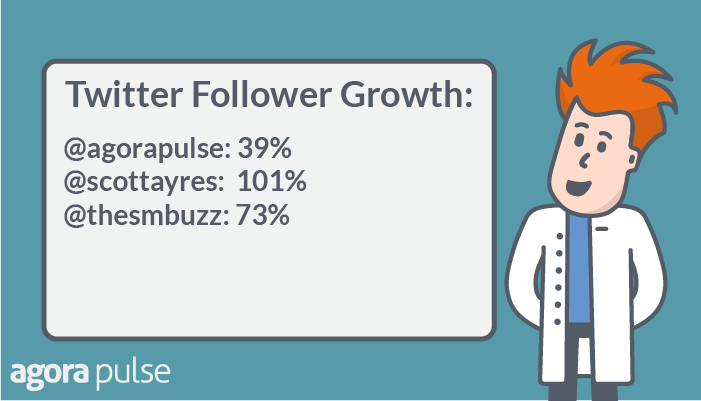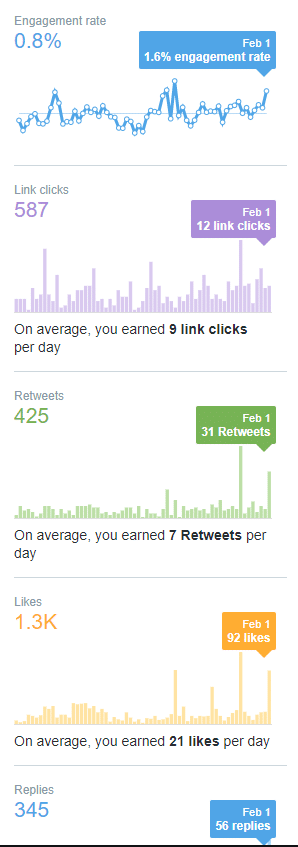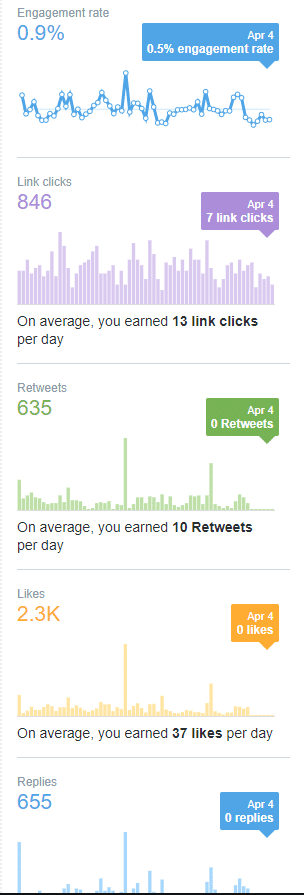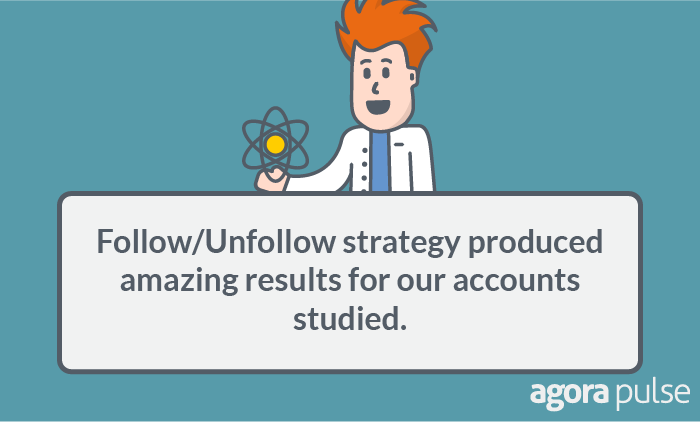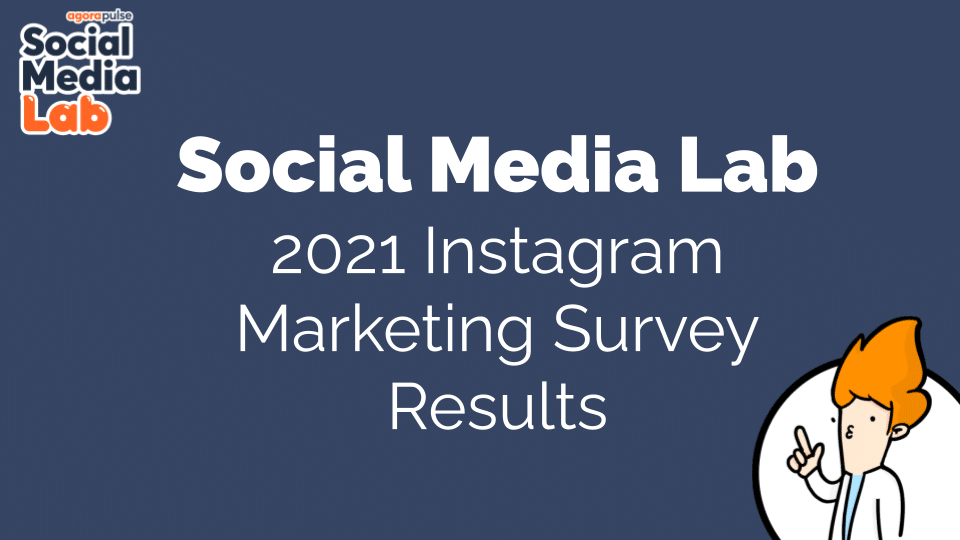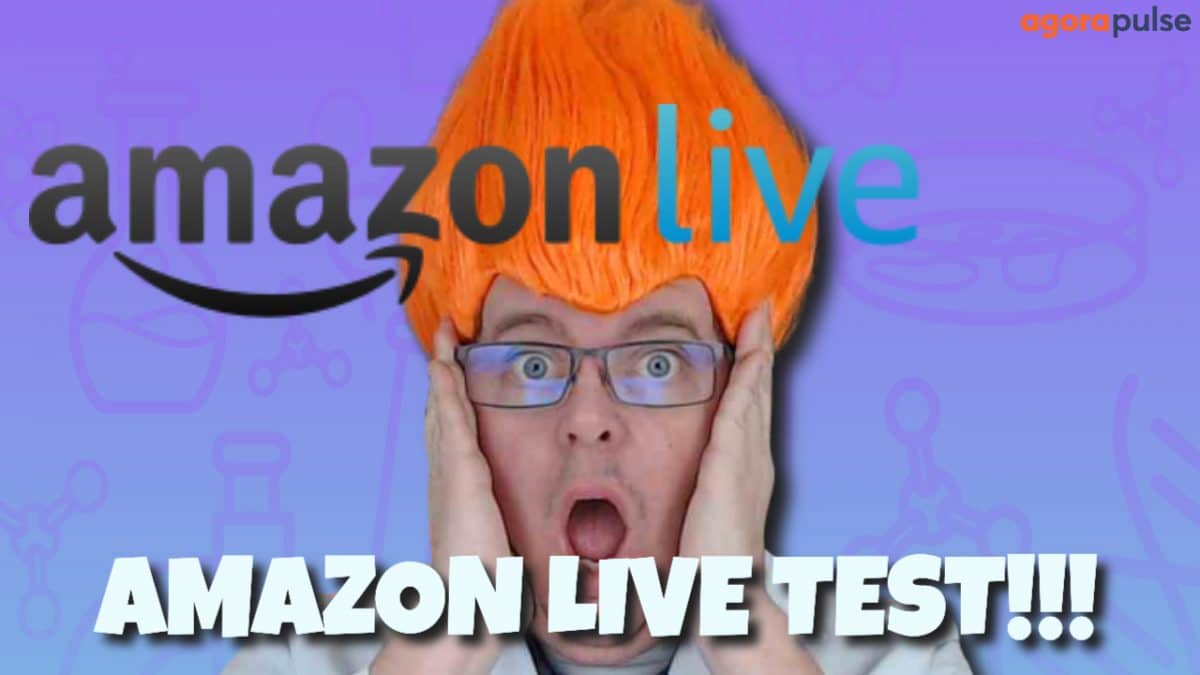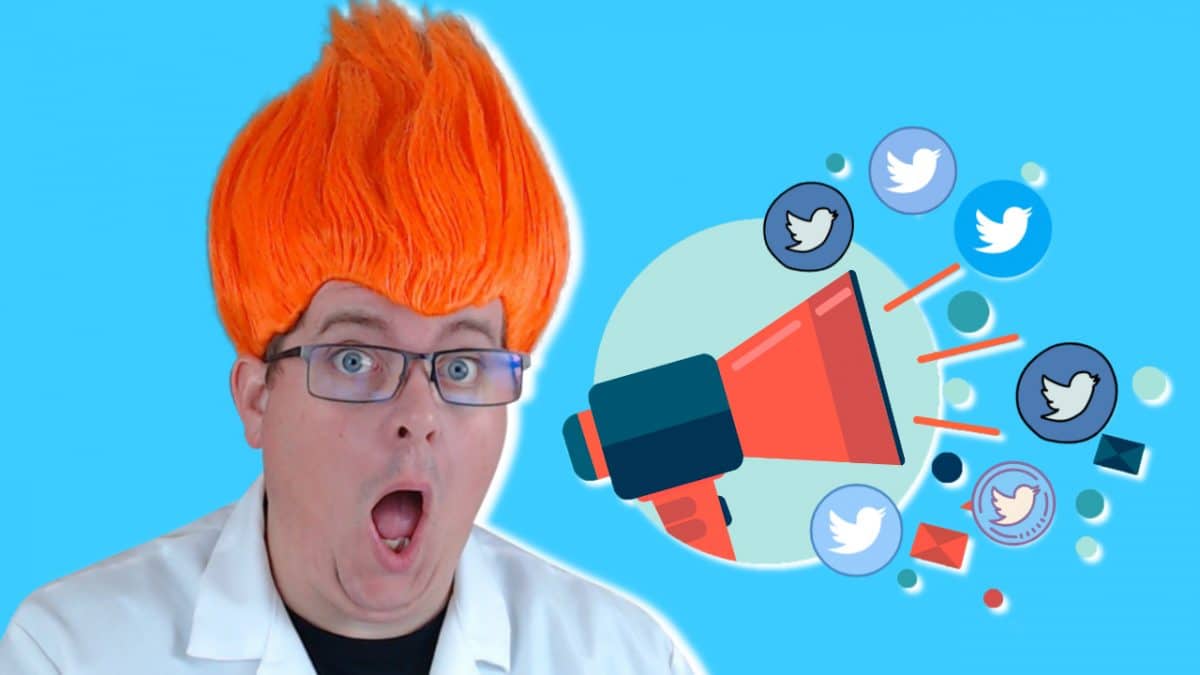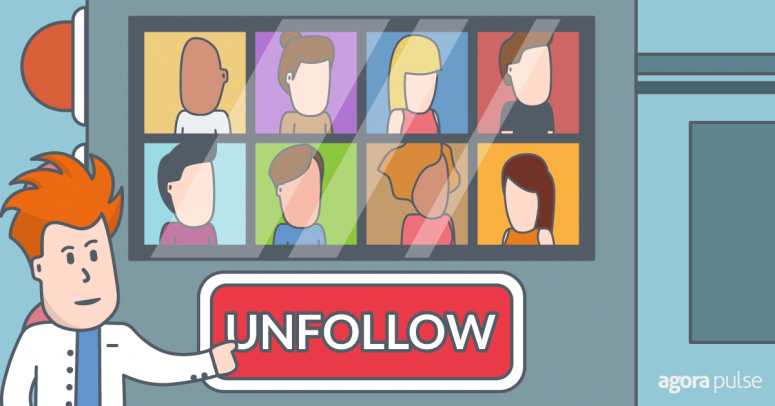
Today’s Social Media Lab experiment is going to be controversial. Most social media managers don’t want to talk about this topic, and those who do talk about it either love it or hate it.
Don’t say I didn’t warn you.
Does a Follow/Unfollow Strategy on Instagram Work?
We’re in the day and age of more responsible, thoughtful social media marketing. I don’t believe anyone can argue against that. But can a strategy used on Instagram and Twitter years ago still be beneficial in today’s social economy?
We’ll aim to test that in this experiment.
Social Media Lab powered by Agorapulse
Scientific Proof on the Follow/Unfollow Strategy: Instagram & Twitter
Subscribe to the Social Media Lab Podcast via iTunes | Stitcher | Spotify
Understanding the Instagram Follow/Unfollow Strategy
So what is it?
Here’s what Stevie Dillon from Stevie Says Social says about this strategy: “The Instagram follow/unfollow method refers to an account following a TON of other social media accounts with the sole objective of getting a ‘follow back’ in return.”
Basically, a user follows someone on Instagram or Twitter in hopes that a person follows back.
Some social marketers hate this method, while others depend on it solely to grow:
“If you’re playing the follow/unfollow game, you’re essentially stunting your growth as a blogger or social media influencer. Sure, you may have ‘grown’ number-wise, but you aren’t actually genuinely growing as a blogger, influencer, collaborator, or person. When you focus your energy on building up a following in an inauthentic way, you’re really just hurting your influence (credibility, community, engagement). ” – Coffee with Summer
“We have been using Instagram automation for years with much success. We have proven that the follow/unfollow strategy is one of the most effective ways to gain Instagram followers. As an example, one account that we help managed grew to 90k+ followers in just under a year with this method.” – WorkMacro
The follow/unfollow debate sounds like a worthy challenge for us to test in the Lab!
Hypothesis: Using a follow/unfollow strategy will gain more followers but not engagement.
How the Social Media Lab Will Test the Hypothesis
You could do all of the following/unfollowing manually. But let’s be honest, no one is likely going to do that—and it’s a pain as I mentioned in a previous test. Keeping up with who to go back and unfollow or how many to do each day would be maddening.
For this experiment, I’ll try a program for Instagram and Twitter to see how they work and let it do the heavy lifting.
I won’t, however, be naming these programs or providing screenshots from them. I don’t want YOU connecting to them and risking your account. We’ll take that risk for you instead then let you decide whether it’s something you want to do.
We also won’t list any programs you could possibly use to do this. Again, you need to decide whether it’s for you or not and evaluate those programs. Many such programs are reputable and follow the rules of Twitter and Instagram, but again it’s your decision.
Time Frame for Testing
Some accounts I have had running the programs longer than the others.
- @agorapulse Twitter | February 1, 2018-April 4, 2018
- @scottayres Twitter | May 12, 2017-April 30, 2018
- @thesmbuzz Twitter | September 28, 2017-April 30, 2018
- @agorapulse Instagram | February 9, 2018-April 30, 2018
- @scottayres Instagram | December 1, 2017-April 30, 2018
- @spacewalkctx Instagram | December 1, 2017-April 30, 2018
- @gracebiblegatesville Instagram | November 28, 2017-April 30, 2018
Accounts Used for the Social Media Lab Experiment
To test on Twitter, I used these accounts:
- @agorapulse
- @scottayres
- @thesmbuzz
For Instagram, I used these accounts:
- @agorapulse
- @scottayres
- @spacewalkctx
- @gracebiblegatesville
The @agorapulse and @scottayres are obvious as to who they belong to. @thesmbuzz is my secondary Twitter account for a blog and podcast I had (and sometimes still post to). I am, however, active on Twitter with it.
The @spacewalkctx account on Instagram is my local business account and has been active for a few years. The @gracebiblegatesville is the Instagram account for the church I attend, and I do some social media for.
All the accounts used were established and actively posting before, during and after the tests.
Follow Methods Used for the Follow/Unfollow Strategy Experiment
I also wanted to go about following/unfollowing like anyone else would (not just strictly for this test) and to increase engagement on the accounts.
So, I didn’t just follow people randomly. For each account, I followed people based on different criteria.
- Strategic hashtags
- Followers of competitors
- Location (this was on the 2 local Instagram accounts)
Here’s a quick summary of each account on both Twitter and Instagram.
@Agorapulse: Followed users that had tweeted certain hashtags
- #bufferchat #contentwritingchat #sproutchat #blog #content #hootsuite #influencers #podcast #smm #smmw18 #socialmedia
@Scottayres: Also followed users based on hashtags
- #agency #agorapulse #blog #blogwriting #blogger #podcast #smallbusiness #entrepreneur #socialmedia #influencers
@thesmbuzz: This account also followed users based on hashtags
- #smm #twittermarketing #marketingtips #startup #socialmedia #facebooklive #smallbusiness
For the Instagram accounts, the options to follow users was bit more robust, allowing me to try a few different methods.
@Agorapulse: used 2 different methods
- Followed followers from other accounts such as @smexaminer @mari_smith @sproutsocial
- Hashtags such as : #socialmedia #smm #marketing #smmw18
@scottayres: used 3 different methods
- Also followed followers of different accounts such as @hootsuite @isocialfanz @mari_smith
- Hashtags such as: #smmw18 #smm #socialmedia #marketingtips #bloggers
- Followed users in different locations: Houston, Waco, Dallas and San Antonio (I’m in Texas)
@spacewalkctx: used 2 different methods
- Hashtags such as: #temple #gatesville #waco #wacotown
- Followed users in different locations: Waco, Gatesville, Hewitt, McGregor, Hamilton and Belton (all within about a 40 mile radius)
@gracebiblegatesville: only used 1 method
- Followed users based on location: Gatesville, McGregor, Hamilton, Crawford and Jonesboro (all within a 30 mile radius)
Results of the Social Media Lab Experiment
Growth happened!
Here are the details:
@agorapulse: Followers have grown from 6543 to 9103, a 39% growth.
@scottayres: Followers have grown from 7478 to 15016, a 101% growth.
@thesmbuzz: Followers have grown from 5937 to 10281, a 73% growth.
The last 2 accounts have been running the program for much longer so the growth rate is higher than the Agorapulse account. But it too was on the same sort of path (we have since turned it off for the time being.)
@agorapulse: Followers grew from 1265 to 3691, a 192% growth.
@scottayres: Followers grew from 3130 to 6302, a 101% growth.
@spacewalkctx: Followers grew from 1095 to 2532, a 131% growth.
@gracebiblegatesville: Followers grew from 115 to 918, a 698% growth.
The Agorapulse Instagram account has only been running the program for about 2 months but has seen tremendous growth. The other accounts have been going for more than 4 months.
What This Growth Means to Engagement
It’s easy to see that every account has seen a great amount of growth, but does this correlate to more engagement? Or is it just pointless followers?
To evaluate this, we’ll look only at the accounts for Agorapulse.
I’m doing this for 2 reasons:
- It’s our company profiles and the most important to us.
- These accounts were using the follow/unfollow tools the least amount of time.
Take a look at the engagement numbers for the @agorapulse Twitter account for December 1-Feb. 1 (2 months before the test):
Now compare this to the stats during the test February 1- April 4:
Though the engagement rate was about the same—.8% vs .9%—every other stat was WAY up:
- Link Clicks: 587 up to 846
- Retweets: 425 up to 635
- Likes: 1.3k up to 2.3k
- Replies: 345 up to 655
Massive increases across the board during this growth period.
Can it all be equated to the increase in followers? No.
But it’s a huge part of it for sure. There is no way to 100% correlate the engagement with new followers, unfortunately.
I think it’s easy to make a correlation for most of it, though.
The @agorapulse Instagram account saw similar increases in engagement.
Below is a snapshot of activity during the testing phase from 2/9-4/30 from inside the Agorapulse app:
If we compare the 80-day period before our experiment, we find this for the same Instagram account:
Notice the amount of posts published during both periods is relatively similar (8 more during the testing phase). But engagement, awareness, and replies were way up. (So were followers, of course!)
Conclusion Based on the Data
Using the follow/unfollow strategy has been a huge success for all the accounts mentioned in this Social Media Lab experiment.
I’m basing this on:
- Increase in followers
- Increase in link clicks on @agorapulse Twitter account
- Increase in engagement on all accounts, but specifically on the @agorapulse Twitter and Instagram account
This strategy is still a viable method to growing your social media following—and subsequently increasing engagement.
But I should mention a few cautions:
- Choose the follow/unfollow tools wisely. Some are against the terms of service on the different platforms. You may get suspended if you use them. Many, however, are in compliance.
- Follow accounts strategically. Don’t just follow everyone. Follow based on hashtags, location (if you’re a local business) and followers of competitors.
- Go slow. Whether you follow/unfollow using a an app or do it manually, go slow. Twitter and Instagram both have limits on how many people you can follow/unfollow per day. The exact number is still a bit of a mystery. Some say on Twitter it’s down to about 250 per day without raising any flags. The restrictions on Instagram aren’t as easy to figure out, I’d also recommend no more than 250 per day to be safe. Usually, if you go over whatever their limit is and they fell you’re moving too fast they will block you from performing that action for 24 hours.
- Don’t unfollow too quickly. Some articles I read recommended unfollowing within 24 hours. I think that’s too fast. I prefer to give a few days in between following before doing the unfollow process. Not everyone is on their accounts daily and may not notice you followed them, and thus haven’t had a chance to return the favor.
The data doesn’t lie. Use this follow/unfollow strategy with caution, and continue to posting great content, while engaging with followers who engage with you and who you follow back.
